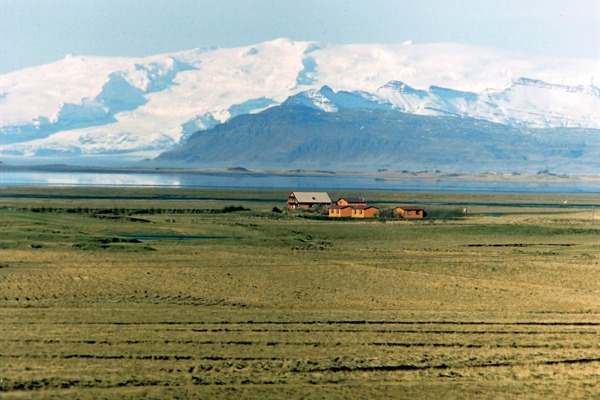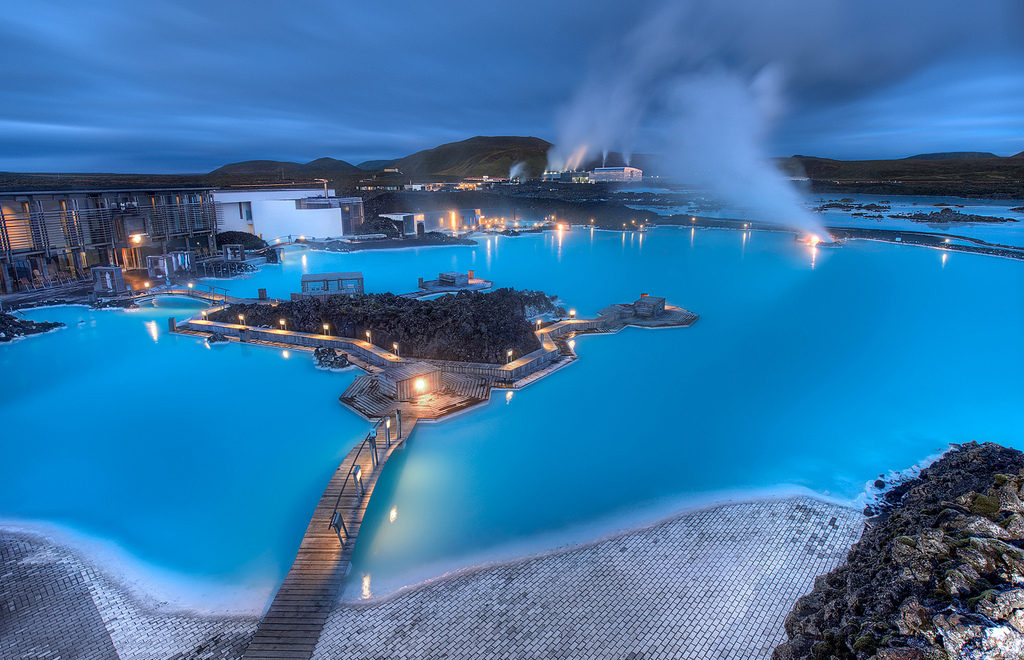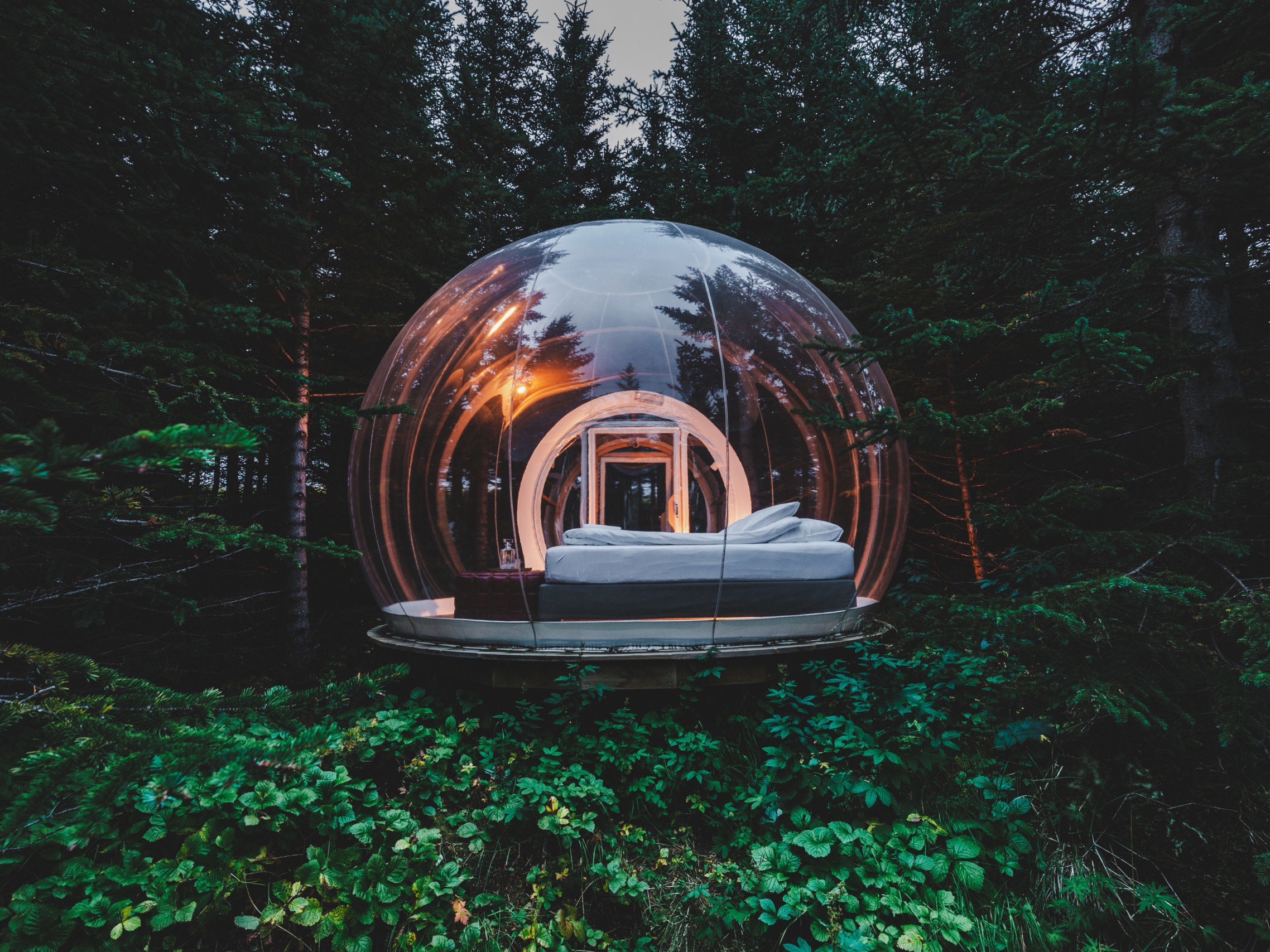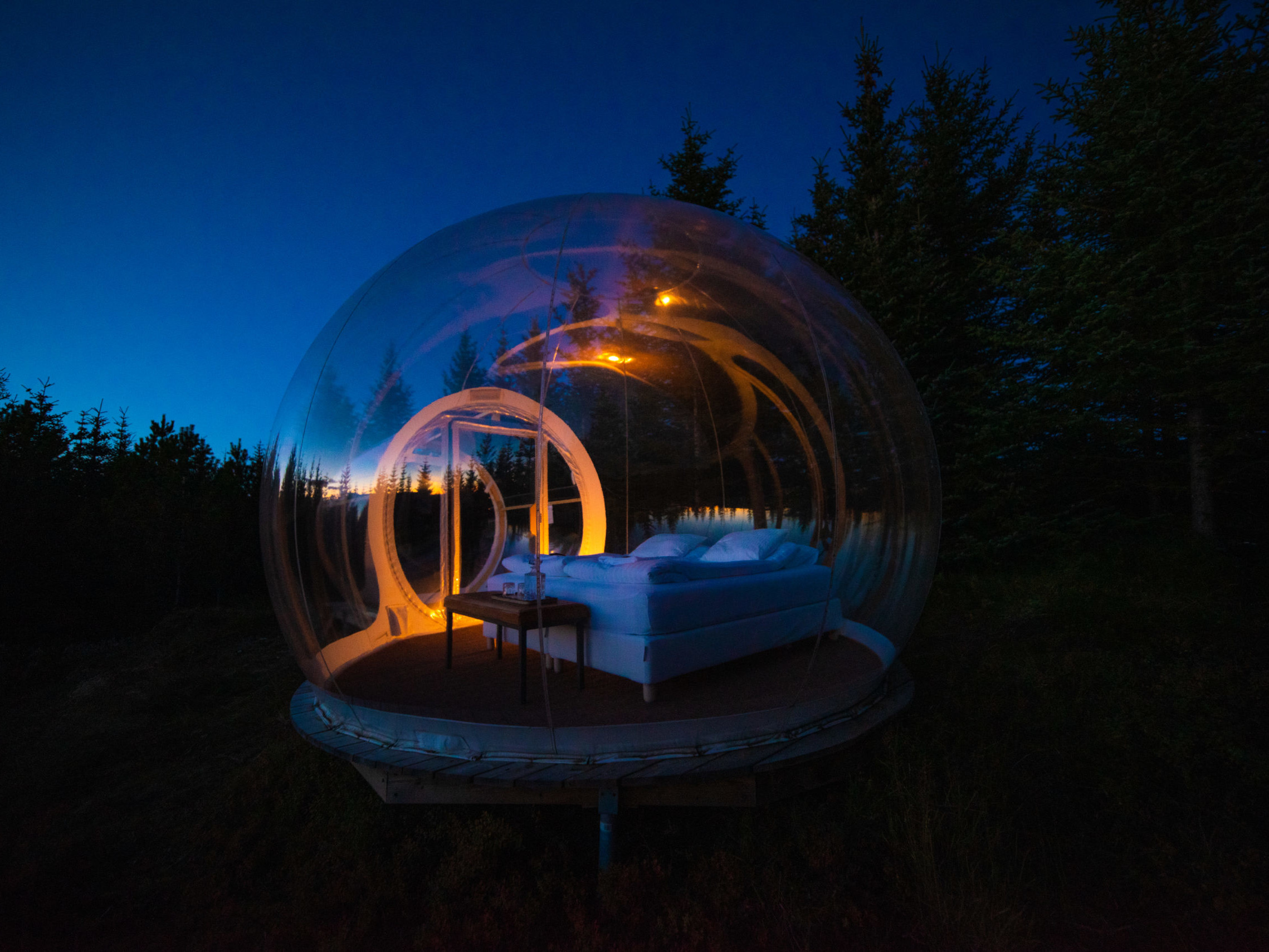Iceland is widely known as ‘The Land of Fire and Ice,’ because both volcanoes and glaciers are dotted around this region. Glaciers are huge, large and persistent ice blocks that only form on a piece of land where snow stays in one place long enough to turn into ice. This snow takes not years but centuries to transform into thick ice masses. Glaciers are unique because these can shift places by crawling forward, which happens due to their sheer mass. This characteristic is akin to slow rivers. Glaciers although are persistent but once these start flowing, their deformation also starts because flow creates cracks, crevasses and sometimes even caves. Many glaciers and volcanoes have formed atop active volcanoes in Iceland and after eruption of these volcanoes the ice above the glacier quickly melts. This creates destructive rivers known as “jökulhlaup”.
Vatnajökull glacier

This is the largest glacier not only in Iceland but in entire Europe. The picture is from one of the icecaves in Vatnajökull glacier. It is located in the south-east area of Iceland. It is so huge that many glacial tongues have formed on all of its sides, just like almost all of the large glaciers found in Iceland. Each tongue has separate name as well and it is not possible to list all names here because these are so many. Most notable one is Öræfajökull glacier, which is a famous hiking point.
Vatnajökull is also popular because Iceland’s highest peak Hvannadalshnjúkur and most active volcano system Grímsvötn are located here.
Svínafellsjökull glacier in Vatnajökull National Park
Located here is the gorgeous glacial lake Jökulsárlón, which can be found on the south-eastern end of the glacier. The entire glacier is covered by Vatnajökull National Park as it happens to be the largest national park in Europe with its area of 12,000Km2.
Langjökull glacier
This is ranked as the second largest glacier in the country. Langjökull means ‘Long Glacier,’ and the name has been derived from its shape. This glacier is located in the western side of the Icelandic highlands. The glacier is easily visible from Geysir. This glacier serves as a popular snowmobiling spot along with The Golden Circle. Two active volcanoes are also located in Langjökull glacier.
Hofsjökull glacier
Ranked as the third biggest glacier in this region, Hofsjökull glacier is located in the Mid-Highlands. It happens to be the largest active volcano in the country and serves as a shield with caldera. Hofsjökull glacier is the primary source of numerous rivers in Iceland including the country’s longest river Þjórsá. The south and north of the country are connected by the Kjölur road that runs between Hofsjökull and Langjökull.
Mýrdalsjökull glacier and Eyjafjallajökull glacier
This is Iceland’s fourth largest glacier and is located right next to the country’s sixth largest glacier Eyjafjallajökull. Both these glaciers are located in Iceland’s south side. It is true that Mýrdalsjökull bigger than Eyjafjallajökull and contains Iceland’s one of the largest and most active volcano, Katla. But, Eyjafjallajökull has become popular recently because of its eruption in a very small volcano back in 2010. There is a popular hiking spot that is located between these two volcanoes known as Fimmvörðuháls. People can easily get on top of the recently erupted volcano, where now a warm, newly formed mountain can be found.
Drangajökull glacier
Drangajokull glacier can be found in the Westfjords. It is Iceland’s fifth largest glacier and the only one that hasn’t decreased in size over the years. It also is the only glacier this is located below 1000m completely.
Snæfellsjökull glacier
Snaefellsjokull glacier is the 13th largest glacier in Iceland and unfortunately it is decreasing in size rapidly too. Nonetheless, it is still counted among the most famous glaciers in Iceland. This glacier is located at the tip of Snæfellsnes peninsula and can be viewed like a crown alongside the Faxaflói bay on a clear day from Reykjavík. This glacier is termed as the jewel of one of the three national parks in Iceland, the Snæfellsjökull National Park. Similar to various other glaciers in Iceland, Snæfellsjökull also is a cone shaped volcano called stratovolcano. It became eternally popular when it featured in Jules Verne’s Journey to the Centre of the Earth as the earth’s central entry point. For the very first time in recorded history the summit became ice free, which happened in August 2012.
Iceland is widely known as ‘The Land of Fire and Ice,’ because both volcanoes and glaciers are dotted around this region. Glaciers are huge, large and persistent ice blocks that only form on a piece of land where snow stays in one place long enough to turn into ice. This snow takes not years but centuries to transform into thick ice masses. Glaciers are unique because these can shift places by crawling forward, which happens due to their sheer mass. This characteristic is akin to slow rivers. Glaciers although are persistent but once these start flowing, their deformation also starts because flow creates cracks, crevasses and sometimes even caves. Many glaciers and volcanoes have formed atop active volcanoes in Iceland and after eruption of these volcanoes the ice above the glacier quickly melts. This creates destructive rivers known as “jökulhlaup”.
Vatnajökull glacier
This is the largest glacier not only in Iceland but in entire Europe. The picture is from one of the icecaves in Vatnajökull glacier. It is located in the south-east area of Iceland. It is so huge that many glacial tongues have formed on all of its sides, just like almost all of the large glaciers found in Iceland. Each tongue has separate name as well and it is not possible to list all names here because these are so many. Most notable one is Öræfajökull glacier, which is a famous hiking point.
Vatnajökull is also popular because Iceland’s highest peak Hvannadalshnjúkur and most active volcano system Grímsvötn are located here.
Svínafellsjökull glacier in Vatnajökull National Park
Located here is the gorgeous glacial lake Jökulsárlón, which can be found on the south-eastern end of the glacier. The entire glacier is covered by Vatnajökull National Park as it happens to be the largest national park in Europe with its area of 12,000Km2.
Langjökull glacier
This is ranked as the second largest glacier in the country. Langjökull means ‘Long Glacier,’ and the name has been derived from its shape. This glacier is located in the western side of the Icelandic highlands. The glacier is easily visible from Geysir. This glacier serves as a popular snowmobiling spot along with The Golden Circle. Two active volcanoes are also located in Langjökull glacier.
Hofsjökull glacier
Ranked as the third biggest glacier in this region, Hofsjökull glacier is located in the Mid-Highlands. It happens to be the largest active volcano in the country and serves as a shield with caldera. Hofsjökull glacier is the primary source of numerous rivers in Iceland including the country’s longest river Þjórsá. The south and north of the country are connected by the Kjölur road that runs between Hofsjökull and Langjökull.
Mýrdalsjökull glacier and Eyjafjallajökull glacier
This is Iceland’s fourth largest glacier and is located right next to the country’s sixth largest glacier Eyjafjallajökull. Both these glaciers are located in Iceland’s south side. It is true that Mýrdalsjökull bigger than Eyjafjallajökull and contains Iceland’s one of the largest and most active volcano, Katla. But, Eyjafjallajökull has become popular recently because of its eruption in a very small volcano back in 2010. There is a popular hiking spot that is located between these two volcanoes known as Fimmvörðuháls. People can easily get on top of the recently erupted volcano, where now a warm, newly formed mountain can be found.
Drangajökull glacier
Drangajokull glacier can be found in the Westfjords. It is Iceland’s fifth largest glacier and the only one that hasn’t decreased in size over the years. It also is the only glacier this is located below 1000m completely.
Snæfellsjökull glacier
Snaefellsjokull glacier is the 13th largest glacier in Iceland and unfortunately it is decreasing in size rapidly too. Nonetheless, it is still counted among the most famous glaciers in Iceland. This glacier is located at the tip of Snæfellsnes peninsula and can be viewed like a crown alongside the Faxaflói bay on a clear day from Reykjavík. This glacier is termed as the jewel of one of the three national parks in Iceland, the Snæfellsjökull National Park. Similar to various other glaciers in Iceland, Snæfellsjökull also is a cone shaped volcano called stratovolcano. It became eternally popular when it featured in Jules Verne’s Journey to the Centre of the Earth as the earth’s central entry point. For the very first time in recorded history the summit became ice free, which happened in August 2012.



